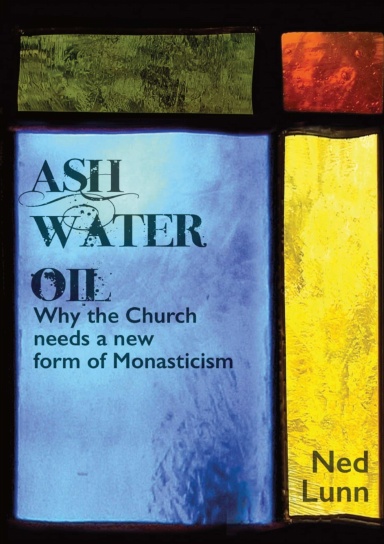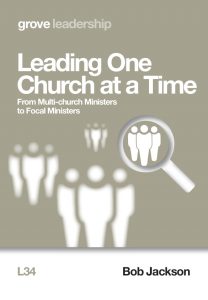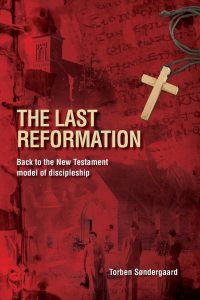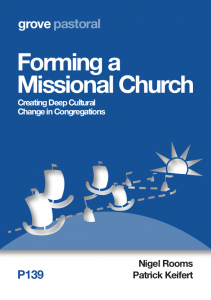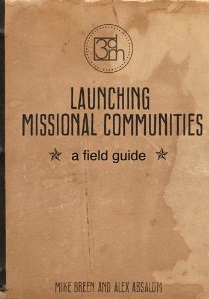Review: Rewilding the Church
 It is very easy to raise questions about the state of the church. It’s harder to provide the answers. This is a decent book, that does the easy bit, but not the hard bit.
It is very easy to raise questions about the state of the church. It’s harder to provide the answers. This is a decent book, that does the easy bit, but not the hard bit.
You don’t have to spend too much time in the ecclesiastical world before encountering a sort of divine discontent.
The ideal of the church is so profound, when you dig into it, that St. Paul could only fathom it by calling it a mystery. God intervenes in this world through his people, through his children, drawn together across time and place, by the Holy Spirit, and counted as united with Jesus himself. All that has come through Jesus to this world – salvation, forgiveness, healing, hope, truth, love, joy, sanctification, peace… – is instantiated, implemented, manifested through his people. We are a “peculiar people” reflecting in our very being together, the reality of Christ’s resurrection and victory, and the essence of life eternal.
To be fair, this ideal is far from a pipe-dream. I have a testimony, just like millions of others, of tasting some of this in the life of God’s people. I have encountered Jesus in sacrament, song, the proclaimed word of God, and the outpoured care and provision of spiritual brothers and sisters. I have known what is like for Church to be lively, dynamic, provocative, restorative, and free!
Like many, of course, I have also encountered the church as a mere shadow of this; stultified, institutionalised, divided, toxic, and sometimes even downright ugly. I was thinking about these things years ago.
How do we respond to this gap between the ideal and the real? How do we cope with it? How do we seek to change it? This is the age-old question that Steve Aisthorpe takes us to with Rewilding the Church.
Aisthorpe draws on a defining metaphor. He looks to the ecological movement of rewilding. This philosophy seeks to restore the vibrancy of ecosystems not through ongoing strategic management of fauna and flora, but by allowing the space for nature to run its course; it entrusts the land to the original, wild, uncontrollable, organic mechanisms that existed before domestication.
Advocates of rewilding argue that much of what is done in the name of conservation is little more than the preservation of man-made landscapes through human intervention and and management. It’s time, they assert, to step back and allow the processes within nature to reshape the environment. Pages 1-2
The application to Church life is clear. The metaphor imagines a domesticated church, beset by an “appetite to plan, manage, contain, and control” (page 2), and in need of rewilding in order to realise that elusive ideal. It’s quite compelling.
At first and second glance, it aligns with many of my own thoughts about the plight of the church: We have become fear-and-performance-driven; much of our ecclesiastical structure is an attempt to provide a controlled, and thus usually dead-on-arrival, outcome. There is stability, but little faith, in following a map. A truly Kingdom Church will be blown by the Spirit, and will learn to chart new waters; it will know why it’s going on the adventure it is called to, but will not always be able to fully articulate what that will look like or where it will end up. Aisthorpe’s metaphor articulates something similar: “We cannot convey a vision or an outcome… we must convince people of the integrity of the process” (page 12).
Similarly, I have been known to say that my church growth model distills down to “those who seek to save their live will lose it.” That is, it is grounded on surrender. Aisthorpe’s metaphor resonates:
I am… suggesting that in our well-meaning efforts to create, facilitate, organise, manage and control, we are sometimes in danger of surrendering authenticity for mere reality… By creating and maintaining congregational models that require certain functions and roles, we forego community that emerges from the gift of its people, shaped by the context of their lives and the realities of the wider community. The distinction I am making may seem obtuse or subtle, but it is certainly important. It is the difference between a community with Jesus at its heart and a club for followers of Jesus. In one we are firmly in control; the other is the result of surrendering the driving seat. (Page 27).
His chapter on “culling the invasive species” is excellent in this regard. Through this part of the metaphor he deals with the invasive idolatry of busyness that feeds much of the toxicity of modern church culture. “For the kingdom that Jesus proclaimed and demonstrated to flourish and expand, ” he says, “we don’t need to do more and we don’t need to be cleverer; it is neither ingenious tactics nor nifty strategy that is required… we need to respond by culling what is unhelpful, live lives of simple and courageous obedience, and trust God that what emerges will reflect the splendour of his kingdom” (page 158). He channels Eugene Peterson’s Contemplative Pastor in this section, and conveys its richness.
Most fundamentally, (and here he draws significantly on Hirsch and Frost and their ReJesus), he centres it on Jesus, the “Wild Messiah”, about whom it is all about. I often perceive the church as beyond renewal, revival, or even reformation, and in need of resurrection. Aisthorpe speaks, with Hirsch and Frost, of a “refounding.” “Rewilding the Church is not a call to spend more hours on our knees,” he exhorts, “although for some it might mean that… it is a refocusing of our attention on Jesus, a reinstating of him at the heart of everything” (Page 57). When we lose Jesus, our “self-identity has been eroded” (page 39) and we need to answer that deepest question of “who do we think we are?”
Rewilding the Church begins here: knowing ourselves to be beloved, putting our roots down deep into Christ, allowing our self-identity to be reshaped in the light of Scriptures, discerning his purposes and stepping out into the adventure of faith. (Page 38)
I have resonance, agreement even, in my engagement with this rewilding metaphor. His perception of the ills of church – that gap between the ideal and the reality – seems to align with my own. He even touches on the problems of missional language (page 46) that I could have used in a recent article on being post-missional! We have the same vista before us. But it begs the question: What now? What do we with this? What next in the pursuit of God’s kingdom, to the bridging of the gap between what is and what can be?
At this point the metaphor begins to ring a little hollow, and his suggestions take on that tinge of theory slightly disconnected from the dirt-under-the-fingernails practice of pastoral ministry.
His weakest chapter, on “tuning in and joining in”, is the clearest illustration of this. It has much that is virtuous; essentially he calls us to discernment and following the Spirit, to a “conscious setting aside of preconceptions and a determination to discern what God is doing and our role in that” (page 74). This is wisdom, and, in the face of a tendency for churches to grab their nearest Alpha course and launch forth into another round of having always done it that way, it is prophetic and useful. But taken too far, as I suspect it might be, it can become an unworkable, deleterious, deconstruction.
Similarly, I admire the work he has conducted in researching the spirituality of the “dones.” I’ve even ordered his The Invisible Church. He recognises that legalism and dogmatism are part of the problem, and he rightly exhorts towards “creating environments where asking questions and exploring doubts are positively encouraged” (page 130). Yet he fails to recognise that there are limits to such an approach, which if transgressed, inhibits and hinders and unbalances the kingdom’s ecosystem.
Let me unpack this: What I think Aisthorpe has done is taken a small step off the edge into a prevalent postmodern fallacy that relies on two impossibilities.
The first fallacy is this: that it is possible to approach the church as a blank slate with no preconceptions. For sure, the kingdom of God rarely comes by means of a bulldozer, a brash leader with hardened ideas of how things should be. It is far worse, however, when it is attempted with a pretense at blank neutrality. There is a form of unhealthy (even arrogant) piety that purports to purely “leave space” for the “Holy Spirit” or the “natural processes” of wild mission. Everyone has an agenda, a preconception of how things should be. It is healthy to admit it, and much better to bring that agenda forward carefully, gently, and with humility.
This flaw is in Aisthorpe’s metaphor. Every example he brings of ecological flourishing embodies a preconception; it presupposes what that flourishing looks like. There is a hidden pre-judgment of what should or should not be the end result of the “rewilding”, of what would be considered a “successful” attempt at rewilding, or what might be considered to be a failure. Every ecologist has a hope, a dream, a passion for what a renewed ecosystem might look like. Everyone has an agenda on their own terms.
But of course, the point of the metaphor is to consider the church: Consider a pioneering venture, a church plant or a fresh expression, launching out like an expedition into the uncharted waters of organic local ministry. The “rewilding” metaphor may help us remember that the team can’t control everything; they don’t know what lies around the corner, who will be their “people of peace”, and what aspects of their work will resonate and take hold. Flexibility, adaptability, and humility will be required. But so will a sense of vision, purpose; and understanding of why the venture is being started, and why it is worth the cost. These are preconceptions that must be owned, explored, amended, and released, not wished away by some pretence!
The second fallacy is related, and it’s this: that it is possible to approach the mission of God as a neutral observer. The rewilding metaphor purports to be a “hands off” approach, and its strength is in its departure from the artificial cultivation of “natural” environments. But it is not really hands-off, is it? Human agency is involved in the reintroduction of native species, the elimination of invasive species, and in “creating the environment” in which a new (and usually “better” in some preconceived sense) balance is achieved. Human agency is present, and can’t be pretended away.
Consider, again, his otherwise very helpful chapter about “noticing who’s missing”. He picks up on his research into “the dones” who have left church behind in their Christian discipleship, and, as mentioned above, exhorts us towards creating an environment which allows for “asking questions and exploring doubts” (page 129). It’s a great push back at dogmatism. But notice the tension: At the same time as he wants to allow for questions and doubts, Aisthorpe also has a kerygma, a truth to assert: We must “refocus our attention on Jesus and the vision he imparted, the kingdom, his certain intention to redeem all of creation and to restore his seamless reign” (page 134).
What’s it going to be? Questions and doubts? Or truth-claims about Jesus? For sure, it’s both, but the rewilding metaphor doesn’t hold that tension. Just as an ecologist cannot pretend that they are not present in their environment; Aisthorpe cannot pretend that the epistemological certainty of the gospel of Jesus – the Way, the Truth, and the Life – can be removed from a church environment of questioning and doubting. To be fair, I don’t think he does, himself, pretend; but his metaphor gives succour to those that do, and they are invariably damaging to the church.
It is good for all mission-minded congregations to listen hard, question well, explore and wrestle with doubts and assumptions. But no-one does this in an absolute sense; no-one cuts themselves off from their epistemological foundations. Those who claim to be moved solely by “listening” are usually unhealthy pursuers of their own certainty; and being self-deceived they tend to hurt and exclude and roll over others blindly. Rather, the strength of the gospel is that it has a certainty in an objective life-giving someone other-than-us, Jesus. In the certainty of him is a truly safe place in which to wrestle with our questions and doubts.
So what’s underneath all this? To be fair, I’m probably amplifying the problem here. Aisthorpe’s book is genuine and temperate, and he only takes a small step into these murky waters. Maybe he has simply run into the problem of all metaphors, that they can be extended too far. I’d love to have a longer conversation with him. His insights intrigue me.
What I’m detecting however, and responding negatively to, is a crack left open for a more insidious miscomprehension of the place of human agency in the church, in mission, and in the world at large. It’s the flip-side of toxic traditionalism (crf. page 174) and just as bad. It is prevalent in the more Greenbelt-y ends of the Christian economy, which I’m sure is Aisthorpe’s area of influence.
In this view of humanity, we are not merely corrupted and corrupting (as in the classical views of sin, guilt, and shame), we are innately corruption itself. We don’t have a problem, we are the problem. By definition, humanity unwilds the environment; we are the problem, in ourselves.
The classical view of the human condition at least has a “solution”: At the worst (and most worldviews have it) it is answered in some form of judgement and retribution. In the gospel, gloriously, it is answered with grace, forgiveness, regeneration, renewal.
This other view has no grace. Can we call it some form of “nihilistic humanism? It’s answer is not the redemption of human agency it is the elimination of it. It’s “gospel” is the diminishment, even the eradication, of humanity itself. If we remove ourselves, the world will be pristine.
We detect this view in our post-postmodern “wokeist” world and as we smart against “cancel culture” and other intersectional diktats. There is no grace. There is no redemption. There is just the elimination of voice, and even of personhood. Where corruption is perceived, in, for example, the recent furore regarding J. K. Rowling’s opinion on the essence of womanhood, it can only be solved by eliminating that voice: She should shut up, she should be nothing, her privileged existence is almost an affront. The best we can do is to rid this world of our corruption; to rid this world of ourselves.
Aisthorpe’s metaphor allows space for this nihilistic humanism. The rewilding metaphor buys into it: The best form of human agency in ecology is not to act. The best form of leadership is to not lead. The best form of being church is not to be, but to dissolve into the mystery of doubt and of questions without answer. Run to the end of this road and we deny the value of the very humanity that Christ himself inhabited; we deny Christ.
The gospel is not a flip to the other extreme in which human agency is absolutised. It is possible to conceive of a dominion ecology in which the telos of the environment is subservience to human passion. We can easily imagine, in a Trumpist world, the essence of church being nothing but the articulation of dogmatic norms defining human worth around legalistic performance. This also denies Christ.
Rather we must come to the middle: The gospel speaks of sanctified, renewed, Spirit-led, life-bringing human agency. God is an interventionist God, not a leave-it-alone-to-its-own-devices deity. God intervenes through humanity. This is ultimately, of course, in Jesus, who fulfils the heart and soul of human vocation; from the creation covenant of Adam, through Mosaic holiness, and Davidic leadership as a shepherd after “God’s own heart.” The telos of the gospel is not grasped in the disappearance of humanity-as-corruption, but in the emergence of humanity-redeemed.
All creation is groaning, Paul says in Romans, as if in the pains of childbirth. For what? To lose the shackles of it’s human parasites? No! “The creation waits in eager expectation for the children of God to be revealed.” (Romans 8:19). The children of God will not rape or pillage or ecologically destroy, but neither will they abandon, remove themselves, or deny their image of God by ceasing to be. They will act with careful, loving, Jesus-shaped agency; tending, nurturing, intervening, growing, proclaiming life and truth.
As for creation, so for the church. Both church and creation are eschatologically linked. I long for a true rewilding of both. In the truest sense, we are also creatures, and we also belong there: we hear our Saviour and the call to his wild.
I see glimpses of this call in Aisthorpe. But in the end, his rewilding is more of a taming of God’s people towards a trajectory that’s not entirely benign. There is wisdom and good to glean from this book, but the church’s deepest longings are not answered here.


